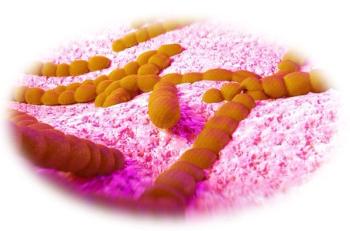
Dermclinic
The mother of this 6-year-old girl brings her to your office for evaluation of an itchy rash that started on her left cheek at the end of December. Another physician prescribed cephalexin for presumed impetigo; the rash abated but did not completely clear. During the past 2 to 3 weeks, new lesions have appeared on the child's neck, arms, and trunk.
Case 1:
The mother of this 6-year-old girl brings her to your office for evaluation of an itchy rash that started on her left cheek at the end of December. Another physician prescribed cephalexin for presumed impetigo; the rash abated but did not completely clear. During the past 2 to 3 weeks, new lesions have appeared on the child's neck, arms, and trunk.
What do you suspect?
A.
What action would you take?
F.
J.
Case 1: Tinea corporis
A KOH examination, H, showed a few sparsely scattered dermatophytes, C. The patient's mother volunteered that she and her husband had given their daughter 2 rats as a Christmas present the week before the rash developed.
Impetigo and MRSA infections are usually tender rather than pruritic; moreover, impetigo should have responded to cephalexin. Granuloma annulare is typically asymptomatic. Because the child had no history of exposure to possible contactants, contact dermatitis was unlikely.
A 1-week course of oral terbinafine and a topical antifungal cream were prescribed for the child. Removal of the rats from the home was recommended. However, the family have become very attached to the animals and would prefer to keep them.
Bonus question: What treatment would be appropriate for the rats?
Case 1: Tinea corporis
Answer to bonus question:
Washing the rats with an over-the-counter ketoconazole shampoo was recommended. In addition, oral terbinafine has been administered to rats at dosages of 20 to 400 mg/kg/d in clinical trials without adverse effects.
1
REFERENCE :
1. Walzer PD, Ashbaugh A. Use of terbinafine in mouse and rat models of Pneumocystis carinii pneumonia. Antimicrob Agents Chemother. 2002;46:514-516.
Case 2:
For 6 years, a 71-year-old man has had these painful growths on his feet. He has tried various topical creams without success.
Which of the following would you include in the differential?
A.
B.
Case 2: Psoriasis
A skin biopsy confirmed the diagnosis of psoriasis, B. The other conditions in the differential were reasonable considerations that were excluded by the biopsy results.
What treatment would you offer?
G.
H.
I.
J.
K.
L.
Case 2: Psoriasis
All of the treatment options would be appropriate; however, the optimal approach is stepwise, with the topical medications as the first choices.
Case 3:
A 16-year-old girl presents for evaluation of urticaria that has occurred daily for the past several months. Recently, she has experienced occasional lip swelling but has had no difficulty in breathing. Antihistamines have not relieved her symptoms. Prednisone is the only treatment that seems to be effective. She is otherwise healthy.
Which of the following would you include in the workup?
A.
B.
E.
F.
Case 3: Chronic urticaria
All of the laboratory studies would be reasonable to include in the workup. In this patient, the results of these studies were normal. Despite therapeutic trials of various oral antihistamines as well as montelukast, she again responded only to prednisone.
What question would you ask this patient? (
Case 3: Chronic urticaria and giardiasis
Inquiry about this patient's travel history revealed that she had been camping in Alaska. Subsequent testing showed a positive (1-3) ova and parasite examination. Treatment with metronidazole was successful.
Giardia infestation has been associated with urticaria and angioedema.1
REFERENCE :
1. McKnight JT, Tietze PE. Dermatologic manifestations of giardiasis. J Am Board Fam Pract. 1992;5:425-428.
Case 4:
A 6-year-old girl presents with a flare of eczema, which had been stable for the past 2 years.
Which of the following would you prescribe?
A.
C.
D.
E.
F.
Case 4: Eczema
This patient's flare did not resolve with the application of a mid-potency topical corticosteroid, B, and emollients.
What question would you ask this girl's parents?
Case 4: Eczema and tinea corporis
On further questioning, the parents said that their daughter's best friend had received 2 rats as a Christmas present (see
This patient was treated with a 1-week course of oral terbinafine as well as a topical antifungal cream, and the rash resolved.
Newsletter
Enhance your clinical practice with the Patient Care newsletter, offering the latest evidence-based guidelines, diagnostic insights, and treatment strategies for primary care physicians.

































































































































































































































































































